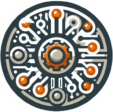Strengthening Data Security: Safeguarding sensitive information and preventing unauthorized access is a critical advantage of access controls in managed IT services.
In today’s digital age, data security has become more important than ever. With the increasing frequency of cyber threats and the potential damage they can cause, safeguarding sensitive information and preventing unauthorized access has become a critical advantage of access controls in managed IT services.
Access controls refer to the mechanisms put in place to manage and regulate user access to computer systems and data. These controls ensure that only authorized individuals or entities are granted access to sensitive information, while also monitoring and tracking their activities within the system. By implementing access controls, organizations can significantly reduce the risk of data breaches and protect their valuable assets from falling into the wrong hands.
One key advantage of access controls is their ability to provide granular control over user privileges. This means that organizations can grant different levels of access to different users based on their roles and responsibilities. For example, a receptionist may only need access to basic customer information, while a manager may require access to more sensitive financial data. By restricting access to only what is necessary, organizations can minimize the potential damage that can be caused by unauthorized users.
Protecting Against Malicious Attacks: Implementing access controls minimizes the risk of cyber threats, such as hacking or data breaches, by ensuring that only authorized individuals can access sensitive systems and data.
Implementing access controls is a crucial step in safeguarding sensitive systems and data against malicious attacks. By limiting access to authorized individuals only, organizations can significantly reduce the risk of cyber threats such as hacking and data breaches. This means that even if intruders manage to breach the outer security measures, they would still be confronted with additional protective layers that make unauthorized access virtually impossible.
Access controls can take various forms, including passwords, biometric authentication, and user privileges. Passwords ensure that only individuals with the correct credentials can gain entry, while biometric authentication adds an extra layer of security by verifying unique physiological characteristics such as fingerprints or facial features. User privileges allow organizations to assign specific access rights to individuals, ensuring that employees can only access the systems and data necessary to perform their duties.
By implementing such access controls, organizations can establish a security framework that creates hurdles for would-be attackers, making it exponentially more difficult for them to infiltrate sensitive systems and data. Moreover, access controls not only provide protection against external threats but also minimize the risk of insider misuse. By strictly regulating who has access to sensitive information, organizations can detect and deter potential unauthorized activities, effectively mitigating the possibility of data breaches and other malicious incidents.
Compliance with Regulatory Requirements: Access controls help organizations meet regulatory standards and industry-specific compliance requirements, ensuring that data is accessed and handled in accordance with legal and ethical guidelines.
Access controls play a crucial role in ensuring that organizations comply with regulatory standards and industry-specific requirements. These controls act as a protective barrier, allowing only authorized individuals to access sensitive data and information. By implementing access controls, organizations can prevent unauthorized access and manipulation of data, mitigating the risk of data breaches and non-compliance.
Meeting regulatory standards is vital for organizations to maintain credibility and trust among their stakeholders. Access controls help organizations achieve this by ensuring that data is handled in accordance with legal and ethical guidelines. These controls enable organizations to enforce strict access restrictions, such as user authentication and authorization processes, password policies, and role-based access privileges. By doing so, organizations can maintain the integrity and confidentiality of their data, protecting it from potential threats and ensuring compliance with regulatory requirements.
Moreover, access controls offer organizations the ability to monitor and track data access activities. This helps in identifying and investigating any suspicious or unauthorized access attempts, further enhancing security measures and ensuring compliance. Organizations that fail to comply with regulatory requirements face severe consequences, including legal actions, fines, and reputational damage. Access controls serve as a preventative measure, reducing the likelihood of non-compliance and minimizing the associated risks.
Overall, access controls are instrumental in helping organizations meet regulatory standards and ensuring industry-specific compliance. By implementing robust access control measures, organizations can effectively protect sensitive data, maintain legal and ethical guidelines, and mitigate the risks associated with non-compliance.
Minimizing Internal Threats: By restricting access to certain resources and data, access controls also mitigate the risk of internal threats, such as employees intentionally or accidentally mishandling or misusing sensitive information.
When it comes to safeguarding sensitive information, minimizing internal threats is of utmost importance. One effective approach to achieve this is by implementing access controls that restrict access to certain resources and data. By doing so, organizations can significantly reduce the risk of employees intentionally or accidentally mishandling or misusing sensitive information.
Access controls serve as a protective barrier, ensuring that only authorized individuals have the requisite access to sensitive data and resources. This not only prevents unauthorized viewing or tampering but also creates an environment of accountability within the organization. By limiting access to essential personnel, access controls ensure that employees only have access to the information necessary for their job roles. This helps to mitigate the risk of mishandling or misuse, reducing the potential for internal threats to compromise sensitive data.
By implementing strict access controls, organizations can enhance their overall security posture and minimize the risk of internal threats. However, it is imperative to strike a balance between restricting access and maintaining productivity. Employers should define clear access permissions based on employees’ roles and responsibilities, ensuring that necessary information is accessible to authorized individuals while preventing unauthorized access from potential perpetrators.
Enhanced Accountability: Access controls enable organizations to track and monitor user activities, providing an audit trail that can be used to identify potential security breaches or policy violations.
Access controls play a crucial role in enhancing accountability within organizations. By enabling the tracking and monitoring of user activities, these controls provide a valuable audit trail that can help identify potential security breaches or policy violations. This not only helps in maintaining the integrity of organizational systems and data but also ensures compliance with regulatory requirements.
In today’s digital landscape, where cyber threats are constantly evolving, the ability to track and monitor user activities is essential. Access controls enable organizations to have real-time visibility into who accessed specific resources, when they accessed them, and what actions they performed. This granular level of monitoring allows for early detection of any unauthorized access or suspicious behavior, thus enabling proactive security measures to prevent potential breaches. Additionally, access controls enable organizations to enforce security policies, ensuring that employees adhere to predefined guidelines and procedures, which in turn helps mitigate the risk of policy violations.
By implementing robust access controls, organizations demonstrate their commitment to data protection and security. Furthermore, the audit trail provided by these controls not only aids in identifying potential security incidents but also serves as tangible evidence during investigations or compliance audits. Ultimately, enhanced accountability through access controls contributes to building a strong security posture, fostering trust among stakeholders, and safeguarding sensitive information from unauthorized access or misuse.
Improved Productivity: Managed IT services with access controls allow employees quick and secure access to the resources they need, reducing time spent on requesting permissions and streamlining workflow processes.
Managed IT services with access controls are revolutionizing the way employees access resources within organizations. By implementing these systems, businesses can provide their employees with quick and secure access to the tools they need to perform their tasks efficiently. This not only saves time but also eliminates the hassle of requesting permissions for every single resource, ultimately streamlining workflow processes.
One of the most significant advantages of managed IT services with access controls is the reduction in time spent on requesting permissions. In traditional setups, employees often face delays and roadblocks when they require access to certain resources. This can hinder their productivity and disrupt the flow of work. However, with access controls in place, employees can swiftly gain access to the necessary resources without unnecessary delays or bureaucratic hurdles. As a result, they can focus on their tasks without being slowed down, resulting in increased efficiency and output.
Moreover, by streamlining workflow processes, managed IT services with access controls enable employees to seamlessly navigate through various tasks. With just a few clicks, they can access the tools, files, and information they need, eliminating the need to waste time searching through multiple systems or waiting for manual authorizations. As a result, employees can work more efficiently, putting their energy and time into the actual work rather than dealing with administrative obstacles.
With improved productivity being a core objective for any business, managed IT services with access controls play a vital role in achieving this goal. By providing employees with quick and secure access to resources while reducing time spent on requesting permissions and streamlining workflow processes, organizations can effectively leverage technology to enhance productivity in the modern workplace.
Related Links
Benefits of Access Controls in Managed IT Services
Access Control Auditing and Monitoring in Data Security

